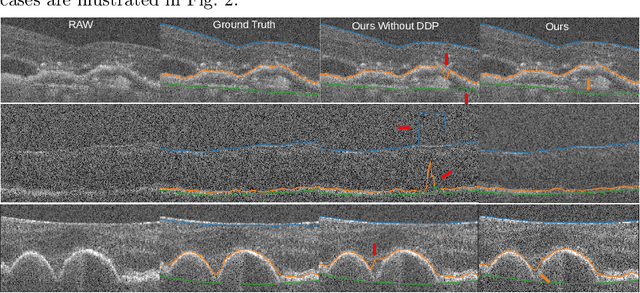A deep learning network with differentiable dynamic programming for retina OCT surface segmentation
Paper and Code
Oct 08, 2022



Multiple-surface segmentation in Optical Coherence Tomography (OCT) images is a challenge problem, further complicated by the frequent presence of weak image boundaries. Recently, many deep learning (DL) based methods have been developed for this task and yield remarkable performance. Unfortunately, due to the scarcity of training data in medical imaging, it is challenging for DL networks to learn the global structure of the target surfaces, including surface smoothness. To bridge this gap, this study proposes to seamlessly unify a U-Net for feature learning with a constrained differentiable dynamic programming module to achieve an end-to-end learning for retina OCT surface segmentation to explicitly enforce surface smoothness. It effectively utilizes the feedback from the downstream model optimization module to guide feature learning, yielding a better enforcement of global structures of the target surfaces. Experiments on Duke AMD (age-related macular degeneration) and JHU MS (multiple sclerosis) OCT datasets for retinal layer segmentation demonstrated very promising segmentation accuracy.
 Add to Chrome
Add to Chrome Add to Firefox
Add to Firefox Add to Edge
Add to Edge